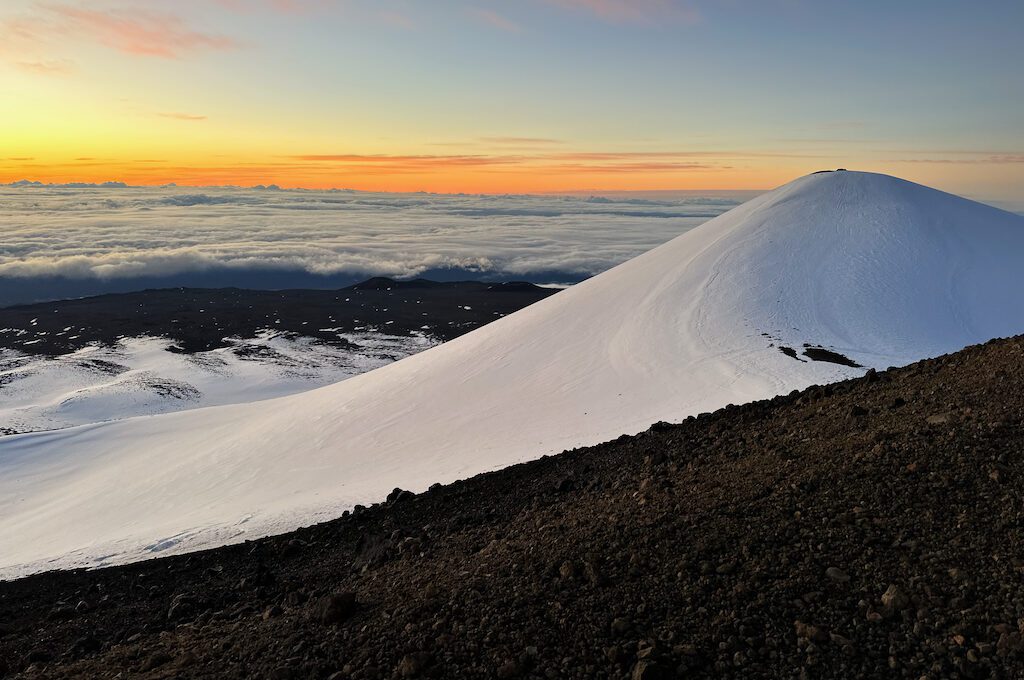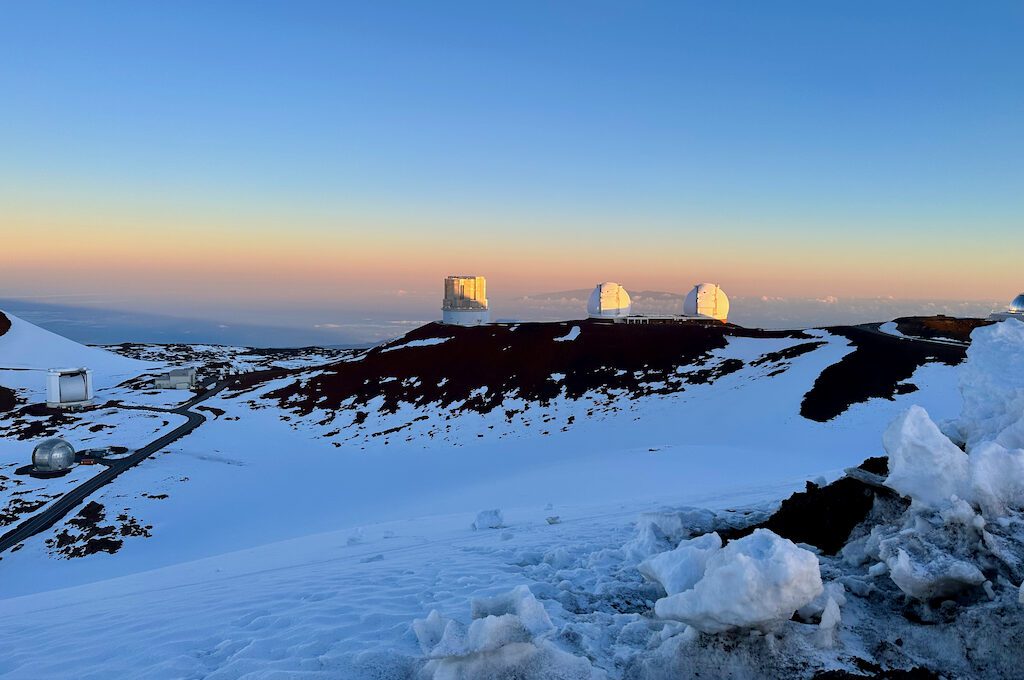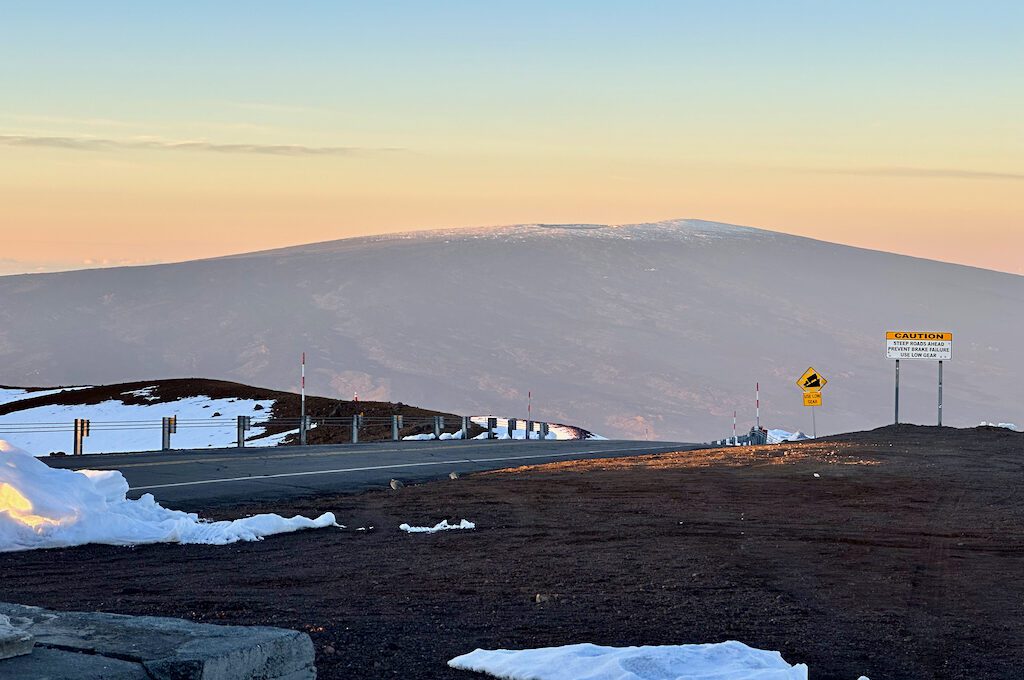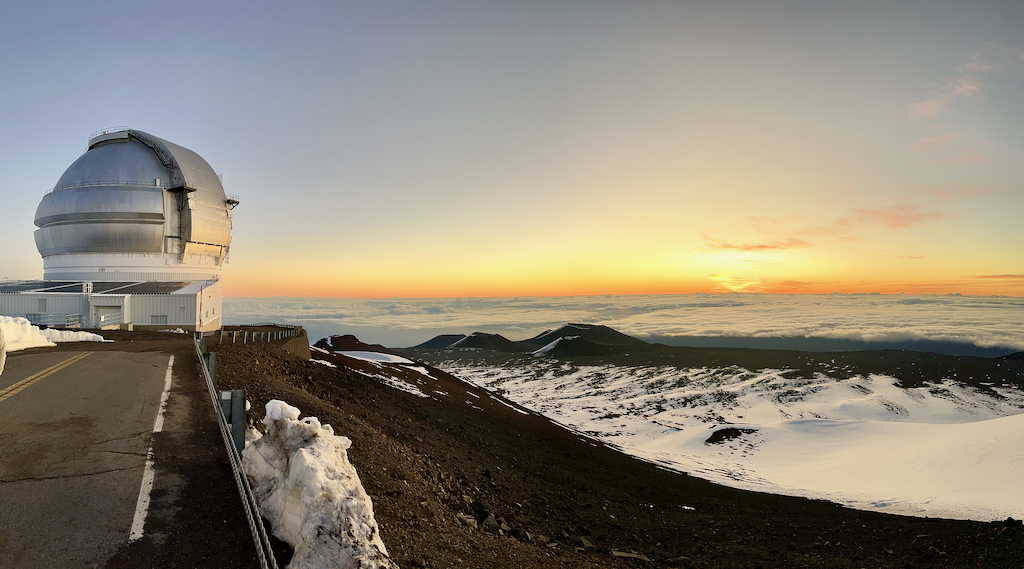Lots of people seriously doubt that it snows in Hawaii. The image just does not conform with our traditional picture of Hawaii as a warm and breezy tropical paradise with lush palm trees and warm beaches.
But does it actually snow in Hawaii? And if so, where can you experience this rare snow?
In this article, I’ll tell you everything you need to know about the snow in Hawaii including the best places to see it.
Table of Contents
Does it snow in Hawaii?
Yes, Hawaii can get quite a bit of snow but only in the mountains where the elevation is significantly higher than sea level. This would include places like: Mauna Kea (elevation 13,803′), Mauna Loa (elevation 13,680′), and Mount Haleakala (elevation 10,023′).
Therefore the only places where you would expect to encounter snow in Hawaii would be on the islands of Maui and Hawaii (the Big Island).
So if you were thinking that you would be chilled out on Waikiki Beach with snow falling on you from the sky, that’s not going to be the case. The temperatures are simply way too warm and stable for you to experience snow at the beach.
For example, on Kailua-Kona which is on the Big Island, the average low at the coldest time of year in January is 68°F and the lowest ever recorded temperature in Honolulu is 52 °F. Those coastal temps are obviously much too warm for snow.
Typically the snow in Hawaii is not going to fall below 9,000 to 10,000 feet in elevation but that’s not always the case. In February of 2019, more than a foot of snow blanketed Polipoli Spring State Recreation Park on Maui, which sits at an elevation of 6,200 feet!
It’s also been reported that there have been extremely rare snowstorms that have brought snow to elevations as low as 3,000 feet, although the recorded evidence seems to be sparse.
In those cases, the snow likely melts very quickly similar to how snow melts pretty fast in the desert.
On average, the mountain tops receive about 3 to 5 snow events per year, although some years won’t bring any and other years will bring even more.
These winter storms also can bring in heavy winds so it’s not always the most peaceful snowfall experience. In fact, it can be quite dangerous to be visiting any of the mountain tops when snow like that moves in.
Surfers will love when these “Kona low” storms blow in because they also bring along huge swells!

The best place to see snow in Hawaii
Probably the best place to see snow in Hawaii is on Mauna Kea, which can be accessed via a mountain road so long as you have a four-wheel-drive vehicle and follow all the mandatory procedures (read more about those here).
Mauna Kea is the highest point on Hawaii and it rises to 13,803 feet. If you were to measure the mountain all the way down to its base which is located at the bottom of the ocean, the entire mountain actually is taller than Mount Everest! Crazy stuff.
Sometimes the snow/ice will not melt completely until sometime in the summer so it’s possible for you to head up to the top and at least see remnants of snow in the months of April/May and possibly even June.
The mountaintop can receive a lot of snow such that it actually builds up a decent little snowpack. When we visited the summit in March, I was very surprised at how thick that snowpack was. You definitely didn’t feel like you were in Hawaii!
Just how much snow can hit Mauna Kea? Well, in December 2016 the mountain received more than two feet of snow! For a tropical paradise, that’s pretty impressive.
The Mauna Kea visitor center at is located at about 9,300 feet so it would be possible for you to visit there on a snowy day although it would probably be a pretty rare occasion.

Just how cold can it get in Hawaii?
The lowest recorded temperature is apparently 8°F which was recorded on Mauna Kea back in February 2019 — the same time that the record snowfall happened on Maui.
When we visited the summit for sunrise in March, it was in the mid 20s °F, although it can warm up to the 40s during the day around that time.
This means that if you want to see snow on Mauna Kea it’s a good idea to bundle up. Flip-flops and an aloha shirt aren’t exactly proper attire on top of the mountain….
But the temperature is only one factor when heading up to check out the snow in Hawaii. You also need to be mindful of the wind.
If there is no wind up on the mountain the temperatures can be very bearable.
But if you run into strong winds with crazy gusts, it can be really difficult to stay comfortable up there. In fact, sometimes they shut down the road because it gets too windy!
Consider that the strongest wind gust recording on top of Mauna Kea was a whopping 191 mph during a winter storm! So you don’t want to mess around with some of these storms.

Visiting during a snowstorm
If you want to actually get caught in a snowstorm in Hawaii that’s going to be a lot tougher.
The snow storms would only be occurring at the higher elevations on the mountains and the roads often get closed during inclement weather. So unless you were already up there or hiked your way up there, it would be a challenge to experience a snowstorm.
And remember those storms can be brutal so there’s definitely a major risk involved.

Skiing and snowboarding in Hawaii?
It’s true, people do ski and snowboard on Mauna Kea when there is enough snow up there, which usually tends to be between December and March. After major storm blows through, conditions might be right for skiing and snowboarding for about a week or so.
However, it’s a lot more challenging than your typical skiing outing at a resort.
That’s because there is no ski resort up there and you have to bring your own equipment. You’ll also have to do a good amount of hiking up and down unless you have someone to act as your personal ski lift.
The snow conditions also are not always ideal as you have to contend with smaller runs, not to mention lava rocks under the snow that could cause injury or damage your equipment.
So this is probably a spot best for people with a good amount of experience. I would not attempt this if you have little to no experience.
And remember, the top of Mauna Kea is considered sacred by some natives so always be as respectful as you can when you’re up there.
Final word
Hawaii definitely gets a fair amount of snow but it’s typically at elevations above 9,000 feet which would only include a few mountains located within the state. This will usually happen 3 to 4 times a year during the winter/early spring but it’s always going to vary based on weather patterns.
On rare occasions, the snowfall may happen at lower elevations around 6,000 feet or reportedly even as low as 3,000 feet but that’s definitely the exception and not the norm.
Daniel Gillaspia is the Founder of UponArriving.com and the credit card app, WalletFlo. He is a former attorney turned travel expert covering destinations along with TSA, airline, and hotel policies. Since 2014, his content has been featured in publications such as National Geographic, Smithsonian Magazine, and CNBC. Read my bio.

